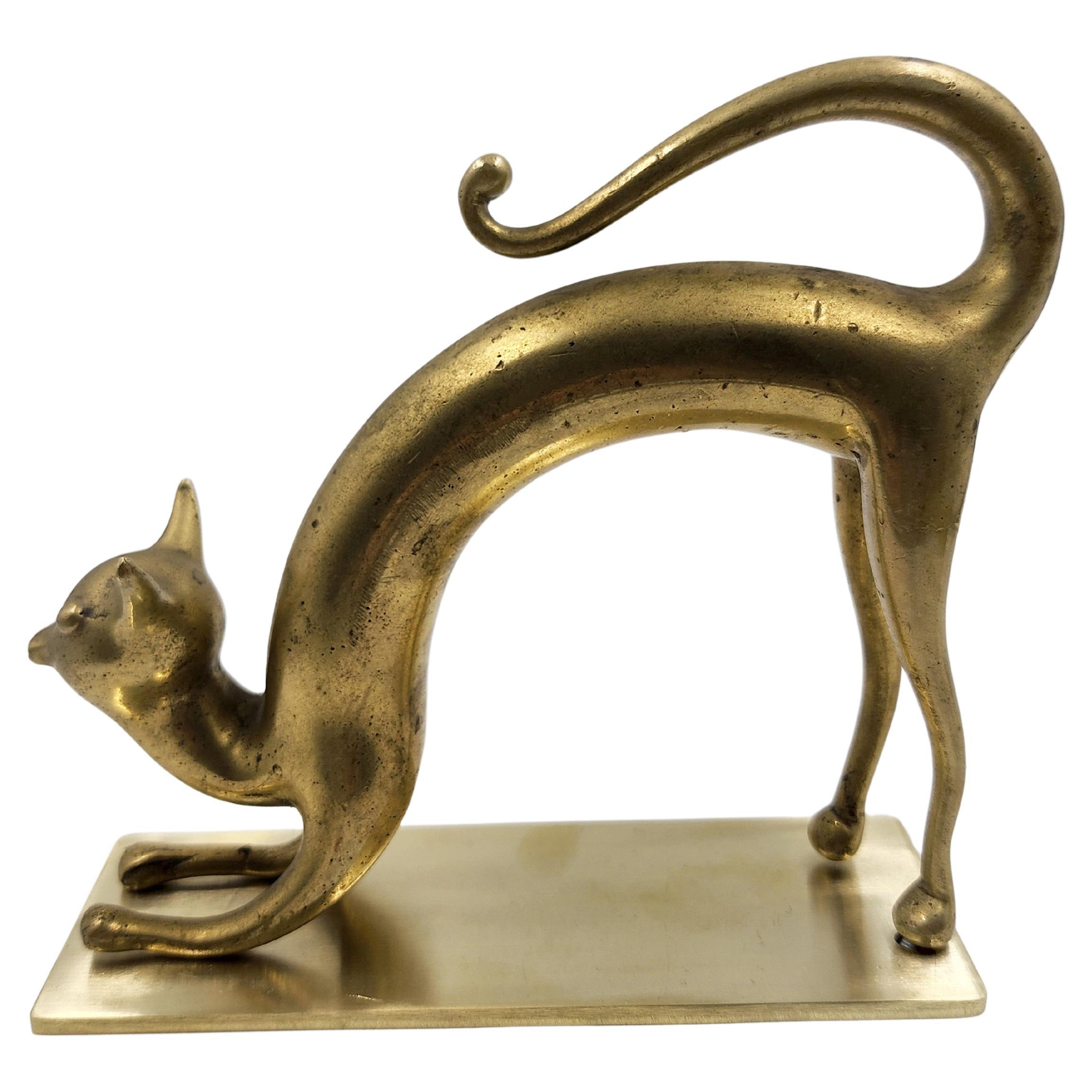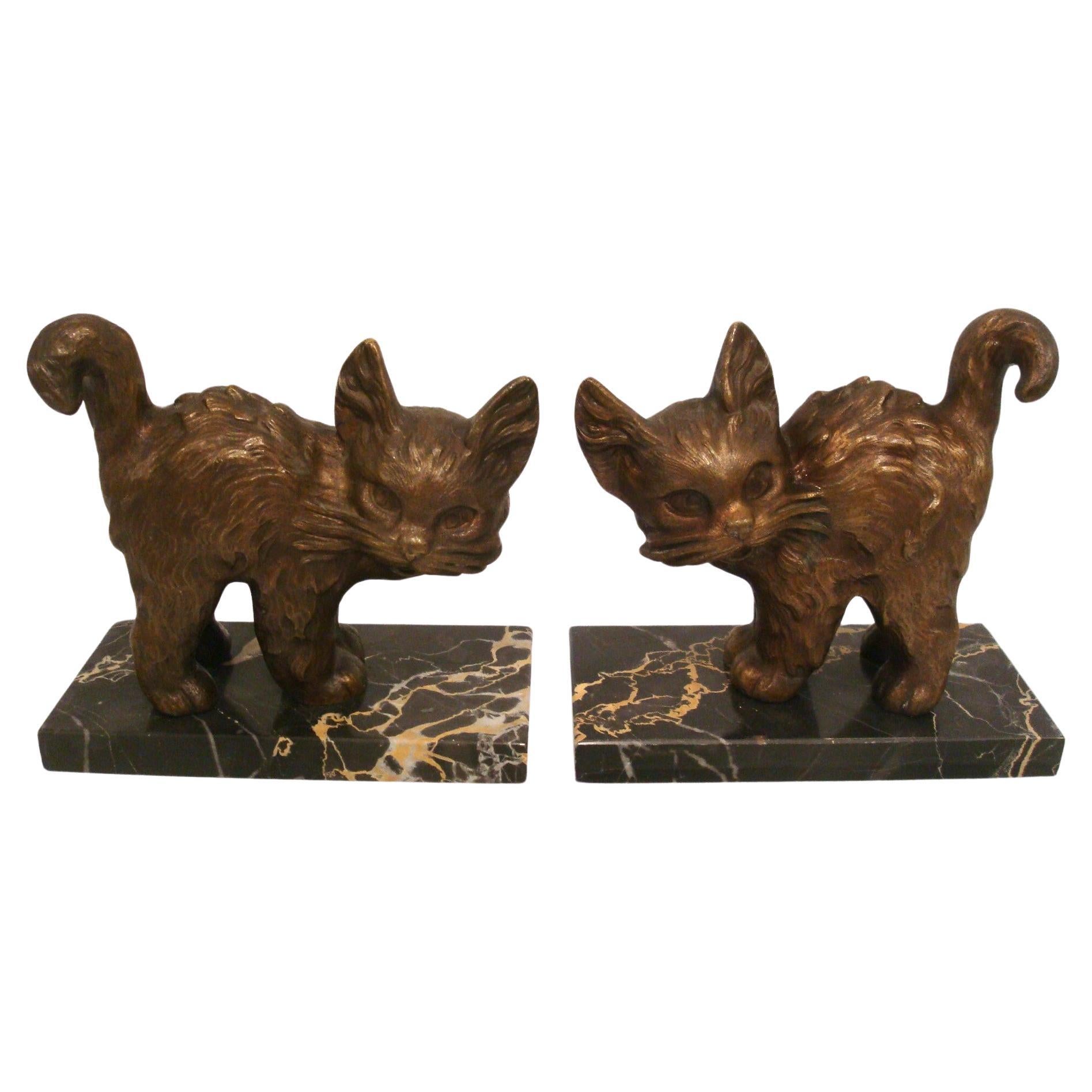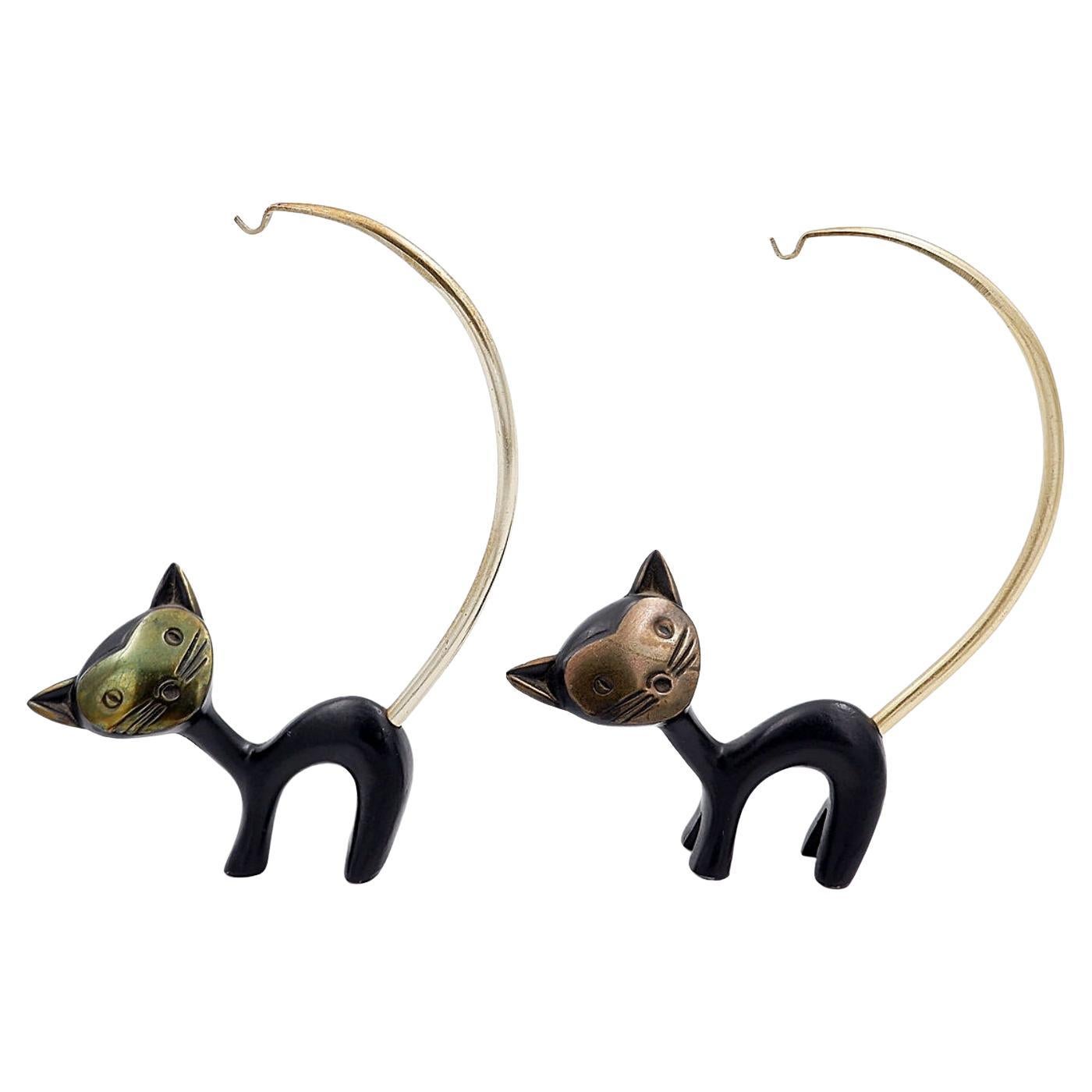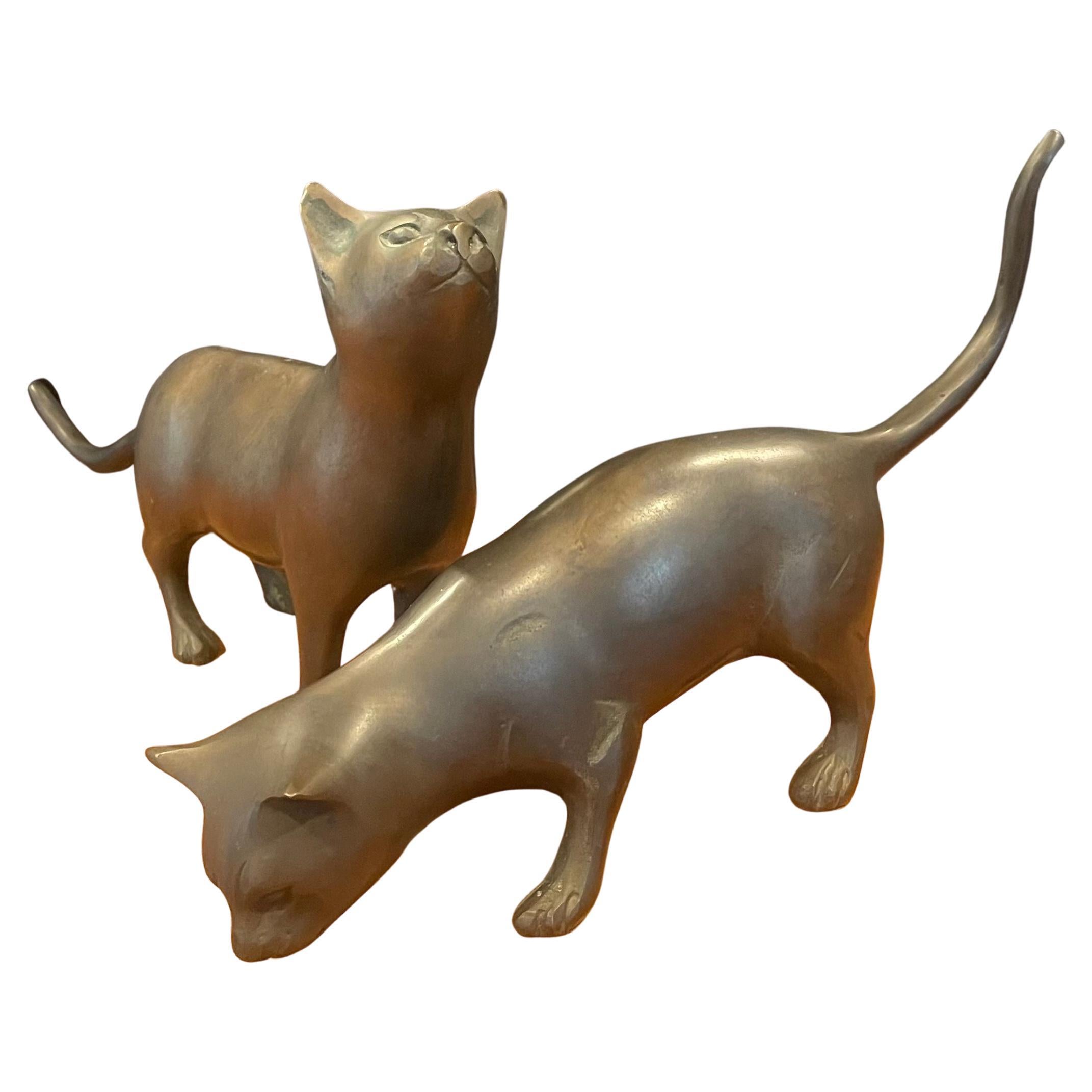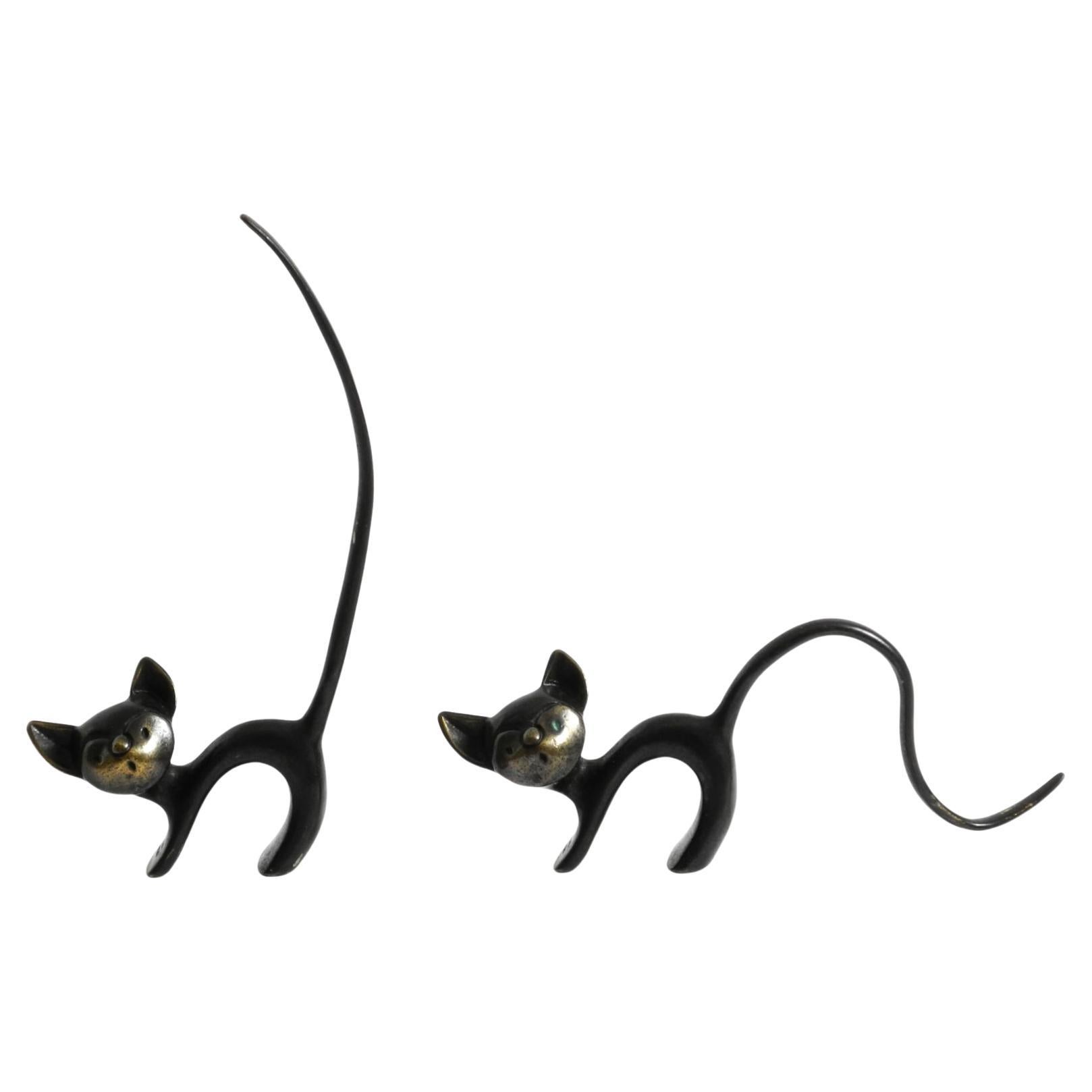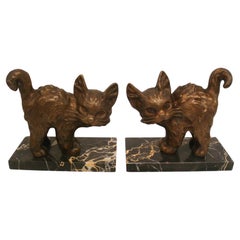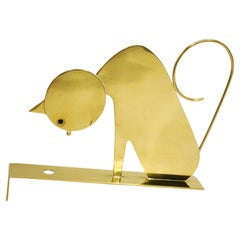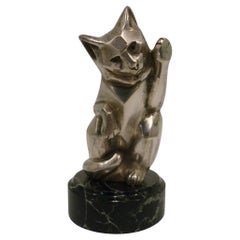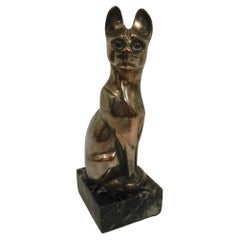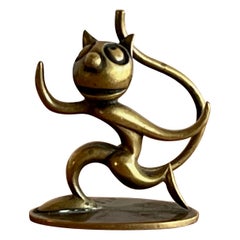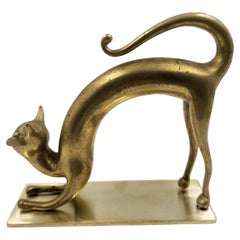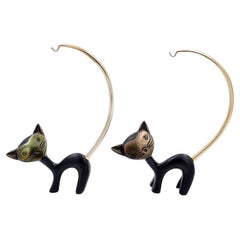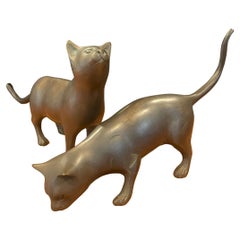Items Similar to Pair of WHW Hagenauer Art Deco Bronze Felix the Cat Austria Figurine
Want more images or videos?
Request additional images or videos from the seller
1 of 11
Pair of WHW Hagenauer Art Deco Bronze Felix the Cat Austria Figurine
$720per set
$900per set20% Off
£550.04per set
£687.55per set20% Off
€631.87per set
€789.84per set20% Off
CA$1,030.85per set
CA$1,288.56per set20% Off
A$1,127.63per set
A$1,409.54per set20% Off
CHF 587.51per set
CHF 734.39per set20% Off
MX$13,567.93per set
MX$16,959.91per set20% Off
NOK 7,440.04per set
NOK 9,300.05per set20% Off
SEK 6,985.48per set
SEK 8,731.85per set20% Off
DKK 4,718.52per set
DKK 5,898.15per set20% Off
About the Item
Pair of Beautiful Singing Cats. Antique and very rare Karl Hagenauer Felix the miniature cat Art Deco brass figurine from WHW Werkstätte Hagenauer Wien, Vienna, Austria, early 20th century.
Handmade with wonderful and precise craftsmanship. Fine example of Vienna bronze and a truly splendid little gems! One of them is signed under the cat.
Carl Hagenauer founded Atelier Hagenauer in 1898. His sons Karl and Franz continued his legacy from 1928 to 1985. Together, they have created thousands of different designs with a primary focus on the decorative arts. His creativity gave rise to the acclaimed "Hagenauer Workshop" and it quickly became the most famous Viennese workshop in the world.
Hagenauer designed these objects in a minimalist style, elegant angles, and an emphasis on fluidity of movement. In the early 1920s, Atelier Hagenauer began producing brass miniatures that became popular as gifts and souvenirs. The first characters had a brass or nickel-plated finish.
We have specialized in the sale of Art Deco and Art Nouveau and Vintage styles since 1995. If you have any questions we are at your disposal. Pushing the button that reads 'View All From Seller'. And you can see more objects to the style for sale. Why are there so many antiques in Argentina?
In the 1880 – 1940 there was a grate wave of immigration encouraged by the periods of war that were taking place. 1st World War took place between 1914 and 1918 2nd World War took place between 1939 and 1945 The immigrants options were New York or Buenos Aires. Tickets were cheap and in Buenos Aires they were welcomed with open arms, as it was a country where everything was still to be done. Argentina was the country of new opportunities, labour was needed and religious freedom was assured, in many cases the of the family travel first until they were settled and then the rest of the family members join them. In the immigrant museum “Ellis Island Immigrant Building” in New York you can se the promotional posters of the boats that would take them to a new life. Between the years 1895 and 1896, Argentina had the highest DGP (gross domestic product) per capita in the world according to the Maddison Historical Statistics index, this situation arose due to the large amount of food being exported to European countries, which were at war. The Argentinean ships left the port of Buenos Aires with food, but they returned with furniture, clothes and construction elements, (it´s common to see this the old buildings of the historic neighbourhood of San Telmo, the beams with the inscription “Made in England)”, as well as many markets that were built in Buenos Aires, such us the San Telmo Market, whose structure was brought by ship and afterwards assembled in 900 Defensa Street. With the great influence of European immigrants living in the country, the children of the upper classes travelled to study in France, resulting in the inauguration of “La Maison Argentinienne”, on 27th of June 1928, in the international city of Paris, which hosted many Argentinians that were studying in Frace. It´s the fourth house to be built after France, Canada and Belgium, being the first Spanish-speaking one. Still in place today (17 Bd Jourdan, 75014, Paris, France). Many of the children of these wealthy families who attended international art exhibitions, museums and art courses abroad, took a keen interest in the European style. This is why Buenos Aires was at the time referred as “The Paris of South America”. Between the years 1890 and 1920 more than a hundred Palaces were built on Alvear Avenue the most exclusive avenue in Buenos Aires. Today some of these palaces have been transformed into museums, hotels and embassies. In the year 1936, the Kavanagh building was inaugurated, it was the tallest reinforced concrete building in South America. During 1994 the American Society of Civil Engineers distinguished it as an “international engineering milestone”, and it´s now considered a World Heritage of Modern Architecture. At the time was common to hire foreign architects such as Le Corbusier, who visited Buenos Aires/Argentina in 1929 and in 1948 he drew up the blueprints for a house built in La Plata City (which was declared a World Heritage Site). In 1947, the Hungarian architect Marcelo Breuer designed “Parador Ariston” in the seaside city of Mar del Plata. After an Argentinean student at Harvard University convinced him to come to Argentina. He worked on an urban development project in the Casa Amarilla, area of La Boca. The Ukrainian architect, Vladimiro Acosta, arrives in Argentina in 1928 and worked as an architect until que moved to Brazil. Antonio Bonet, a Spanish architect who worked with Le Corbusier in Paris, arrives in Argentina in 1937, where he carried out several architectural works and in 1938 designs the well-known BFK chair. Andres Kálnay, of Hungarian origin, made around 120 architectural masterpieces, among which the former Munich brewery stands out, he even made the furniture’s design. The German architect, Walter Gropius, director of the Bauhaus, lived in Argentina, where he wrote articles for “Sur” magazine and founded in Buenos Aires, an architectural firm with Franz Möller, who was also an architect, where he built two houses. At the same time several famous designers decided to immigrate to Argentina, among them we can find the well-known French designer, Jean-Michel Frank, who arrived in the country in 1940 and also worked for the Rockefeller family. Special pieces were made, which were sold exclusively in the country, such as the well-known German company “WMF”, who sold their products by catalogue, which were chosen by the ladies of high society in the list of wedding gifts, as well as the pieces designed by Christofle. The Swiss sculptor Alberto Giacometti, made special pieces for Argentinean mansions. In 1904 the first Jansen branch outside Paris was established in Buenos Aires, as the Argentinean clientele demanded a large amount of furniture, from the end of the 19th century to the mid-20th century. In 1970, the brand Rigolleau Argentina made pieces authorised by Lalique. The brands Maple and Thompson also set up shop in the country. The French plastic artist, Marcel Duchamp moved to Argentina in 1918-1919. Glass signed Gallé, Charder, Leverre, Schneider, Muller and other French firms. They were bought in flower shops and were given to ladies with beautiful floral arrangements. Some furniture manufacturers travelled to international fairs and bough the patterns to produce the furniture in Argentina, such as the furniture firm Englander and Bonta, who bought the patterns in Italy. It is worth mentioning that in Argentina we have the largest community of Italians outside of Italy, as it is estimated that 70 percent of the inhabitants have at least one Italian descendant, followed by Spanish immigrants. The most Important furniture stores in Argentina: Comte is founded in 1934 (under the direct management of Jean Michel Frank in 1940). Nordiska (Swedish company established in 1934). Churba in 1960, a company that brought foreign designers to present their furniture in the country: Denmark: (Arne Jacobsen, Finn Juhl, Bender Madsen, Ejner Larsen, Poul Kjaerholm, Hans Wegner) Sweden: (Hans Agne Jakobsson, Gustavsberg) United States: (Herman Miller) Finland: (Lisa Johansson, Folke Arstrom, Tapio Wirkkala, Alvar Aalto, Timo Sarpaneva) Swedish Factory: (Orrefors) Italy: (Littala, Vico Magistretti, Emma Gismondi, Gae Aulenti, Angelo Mangiarotti, Elio Martinelli, Gianna Celada, Angelo Mangiarotti, Mario Bellini, Carlo Scarpa) Finland: (Olivia Toikka) Plata Lappas (Lappas Silver): a goldsmith shop founded in 1887 in Argentina by Alcibiades Lappas of Greek origin. In 2019, in Argentina took place “the Art Deco world congress” . Argentina currently has more than 100 Art Deco buildings and another 90 Art Nouveau buildings throughout the city of Buenos Aires. Argentina is a country that has not been involved in many wars, which is why it has been a refuge for works of art and antiques from different periods of time, unlike European countries. That is way many collectors, museums and antique dealers from all over the world visit it, you should not miss the opportunity to visit this great country.
- Creator:Werkstätte Hagenauer Wien (Maker)
- Dimensions:Height: 1.66 in (4.2 cm)Diameter: 1.19 in (3 cm)
- Sold As:Set of 2
- Style:Art Deco (In the Style Of)
- Materials and Techniques:
- Place of Origin:
- Period:
- Date of Manufacture:1930´s
- Condition:Wear consistent with age and use.
- Seller Location:Buenos Aires, AR
- Reference Number:1stDibs: LU2027342604762
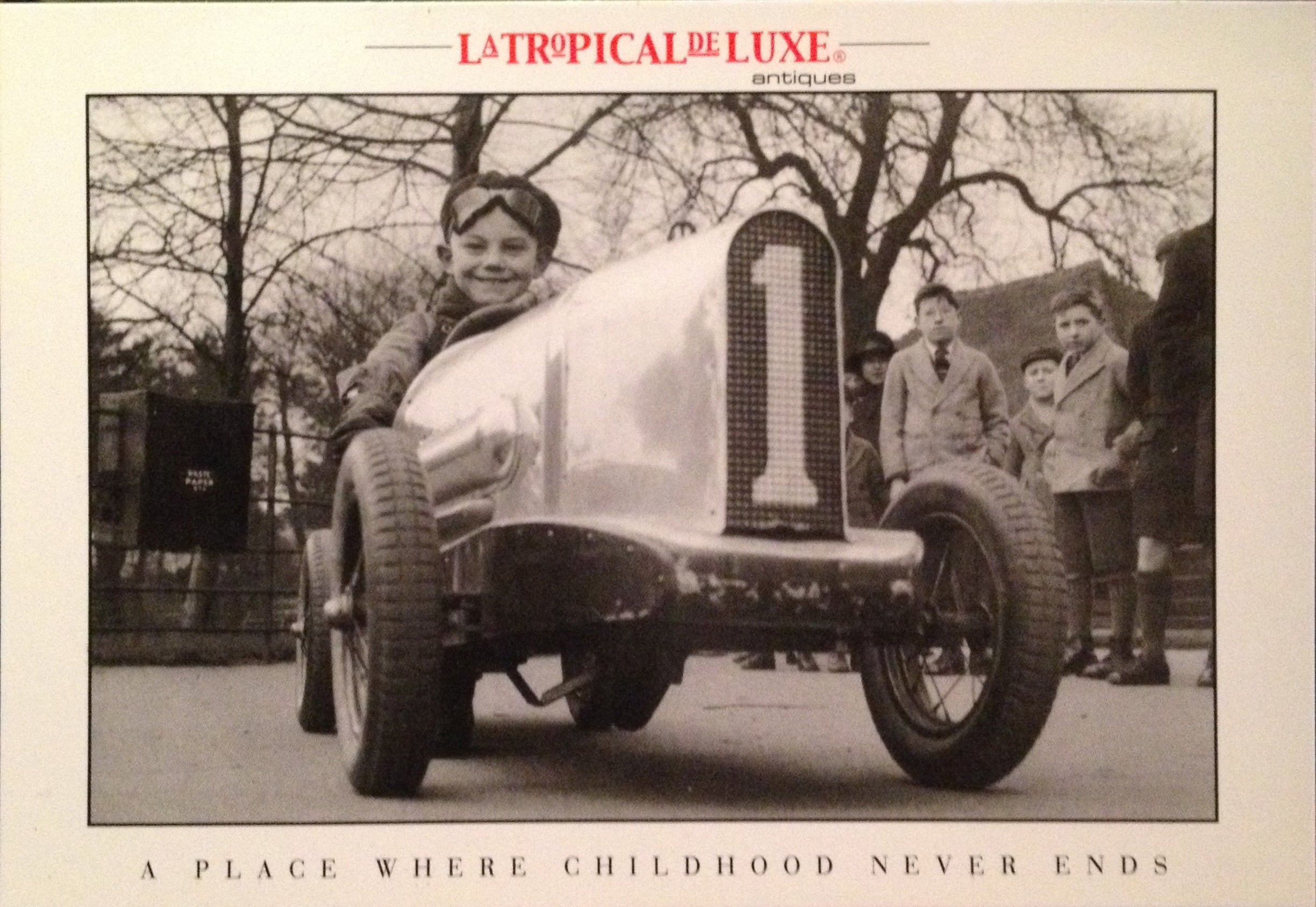
About the Seller
4.9
Vetted Professional Seller
Every seller passes strict standards for authenticity and reliability
Established in 2002
1stDibs seller since 2016
325 sales on 1stDibs
Typical response time: <1 hour
- ShippingRetrieving quote...Shipping from: Buenos Aires, Argentina
- Return Policy
Authenticity Guarantee
In the unlikely event there’s an issue with an item’s authenticity, contact us within 1 year for a full refund. DetailsMoney-Back Guarantee
If your item is not as described, is damaged in transit, or does not arrive, contact us within 7 days for a full refund. Details24-Hour Cancellation
You have a 24-hour grace period in which to reconsider your purchase, with no questions asked.Vetted Professional Sellers
Our world-class sellers must adhere to strict standards for service and quality, maintaining the integrity of our listings.Price-Match Guarantee
If you find that a seller listed the same item for a lower price elsewhere, we’ll match it.Trusted Global Delivery
Our best-in-class carrier network provides specialized shipping options worldwide, including custom delivery.More From This Seller
View AllArt Deco Bronze Cat Bookends by Alexandre Kéléty. France 1925
By Alexandre Kéléty
Located in Buenos Aires, Olivos
Art Deco Bronze Cat Sculpture Bookends, by Alexandre Kelety. France 1925. Fantastic details.
Biography
He was active as an artist, sculptor, paint...
Category
Early 20th Century French Art Deco Bookends
Materials
Marble, Bronze
Art Deco Bronze Hagenauer Sculpture of a Cat 1930´s
By Werkstätte Hagenauer Wien
Located in Buenos Aires, Olivos
Hagenauer Bronze Sculpture / Figure of a cat looking threw a hole.
The sculpture is called: Cat in front of mouse hole. It was made in Austria in 1930 - 1935. Very good conditions.
T...
Category
Mid-20th Century Austrian Art Deco Animal Sculptures
Materials
Bronze
Art Deco Cat Sculpture Paperweight Silvered Bronze. Signed Rochard, France 1920
By Irénée Rochard
Located in Buenos Aires, Olivos
Art Deco Cat Sculpture / Figure Silvered Bronze. Signed Irénée Rochard. Made in France 1920´s. Lovely desk paperweight of a sitting cat playing,...
Category
Early 20th Century French Art Deco Animal Sculptures
Materials
Marble, Bronze
Art Deco Bronze Figure of a Cat 'Chat De Siam Assis' by Edouard M. Sandoz
By Edouard-Marcel Sandoz, Susse Freres
Located in Buenos Aires, Olivos
Very Rare Art Deco French silver plated bronze sculpture figure of a cat, ' Chat De Siam Assis ‘. This figure was produced as paperweight and also as car ...
Category
Early 20th Century French Art Deco Animal Sculptures
Materials
Bronze
Pair of art deco bookends Cat playing with a Ball. France 1925
Located in Buenos Aires, Olivos
Pair of art deco bookends Cat playing with a Ball. France 1925
Nice pair of Art Deco bookends with sculptures of cats playing what a ball. Made of silvered bronze, on marble bases. ...
Category
Early 20th Century French Art Deco Bookends
Materials
Marble, Bronze
Mid Century / Art Deco / Vintage Brass Stretching Hagenauer Cat Sculpture Figure
By Werkstätte Hagenauer Wien
Located in Buenos Aires, Olivos
Mid Century Lovely Stretching Hagenauer Sculpture, in the form of a cat.
Made by Werkstätte Hagenauer Wien.
Stamped Atelier Hagenauer Wien - Made in Austria and the Logo.
A metallic...
Category
Mid-20th Century Austrian Mid-Century Modern Animal Sculptures
Materials
Brass
You May Also Like
WHW Hagenauer Art Deco Bronze Felix The Cat Austria Miniature Figurine
By Werkstätte Hagenauer Wien
Located in St.Petersburg, FL
A stylish and stylized miniature of Felix the cat by Werkstatte Haugenauer Wien, made in Austria. Very charming and beautifully made of bronze, signed on...
Category
Vintage 1930s Austrian Art Deco Animal Sculptures
Materials
Bronze
Austrian Bronze Cat Figure, Hagenauer
By Karl Hagenauer
Located in Autonomous City Buenos Aires, CABA
Austrian Bronze Cat Figurine, Hagenauer
This Austrian bronze cat figurine, attributed to Hagenauer, presents the feline in a stretched, arched pose...
Category
20th Century Austrian Art Deco Animal Sculptures
Materials
Bronze
Pair of Walter Bosse (attr.) Cats Figurines for Hertha Baller Austria - 1950s
By Walter Bosse
Located in Linkebeek, BE
Measures : 12cm x3.5cm H:15.5cm
Materials : Brass Blackened
Walter Bosse (attr.) Cat Figurines for Hertha Baller Austria - 1950s
Wear consistent with age and use : in very good con...
Category
20th Century Austrian Mid-Century Modern Animal Sculptures
Materials
Bronze
Pair of Bronze Cat Sculptures
Located in San Diego, CA
Cool pair of bronze cat sculptures circa 1970s. They are in original condition with a fine patina and a few small dings and some surface scratche...
Category
Mid-20th Century American Animal Sculptures
Materials
Bronze
$340 Sale Price / set
20% Off
Two Mid Century brass cats as ring holders by Walter Bosse for Herta Baller
By Walter Bosse, Herta Baller
Located in München, DE
Two original mid-century modern brass cat ring holders by Walter Bosse for Herta Baller.
Beautiful, great design. Made in Austria. Manufactured in the 1950s.
Very good condition with...
Category
Vintage 1950s Austrian Mid-Century Modern Animal Sculptures
Materials
Brass
Cat figure made of Viennese bronze by Franz Bergman
By Franz Bergmann
Located in Autonomous City Buenos Aires, CABA
Cat figure made of Viennese bronze by Franz Bergman
This figure is by artist Franz Bergman that represents a cat armed with a rifle with a red bag of ammunition.
It is a cold painte...
Category
Antique Late 19th Century Austrian Art Nouveau Animal Sculptures
Materials
Bronze
More Ways To Browse
Austrian Art Deco Figurines
Art Deco Bronze Cat
Vintage Brass Cat Figurine
Bronze Cat Figurine
Wien Figurine
Vintage Swordfish
Vintage Wooden Elephants
White Dog Ceramic
Wood Carousel Animals
Wood Chinese Horses
Antique Terracotta Dog
Art Deco Bronze Panther
Art Deco Dolphin
Art Deco Parrot
Blue Glass Italian Bird
Blue Roosters
Bonheur Bronze
Bronze Pair Of Chinese Lions

